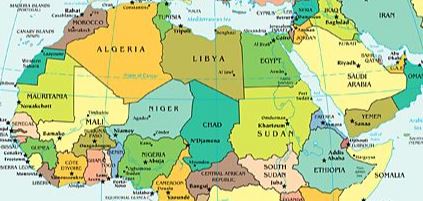
The Second Arab Spring: Algeria, Sudan, and Libya Amidst the Backdrop of Regional War and Chaos
Recent developments in North Africa show that the chaos and instability begun in the “Arab Spring” of 2011 continue to have effects on nations and regimes today. From Algeria to Libya, to Sudan, events this month all show that dictatorships in North Africa remain vulnerable to pro-democracy protesters. This new round of anti-authoritarian protests and action is being referred to as the Second Arab Spring, all against the backdrop of continued warfare and interventions in North Africa and the Middle East as the entire region deals with anti-authoritarian revolts and Jihadist activity that aims to destabilize all regimes.
On April 2, continued protests forced the resignation of Algeria’s long-time ruler, Abdelaziz Bouteflika. Then, on April 11, the dictator of Sudan, Omar al-Bashir, was overthrown in a coup by his own military, as his capital city was embroiled in massive anti-government protests. Meanwhile, in Libya, the continued civil wars begun with the 2011 Arab Spring revolt against dictator Muammar Khaddafi are reaching a new climax, as the army of General Khalifa Hifter (who ironically, was one of the junior army officers who helped Khaddafi come to power in 1969), marches on Tripoli and threatens the UN-recognized Libyan government.
Of course, none of this is happening in a vacuum. In the Middle East, Syria is still embroiled in the last stages of a horrible civil war begun in 2011 when dictator Bashir Assad responded to his Arab Spring protests with violence. Concurrent to that war is the humanitarian crisis in Yemen, where another authoritarian ruler, Ali Abdullah Saleh, fell as his nation plunged into civil war and foreign intervention.
In nearly all of these incidents, foreign intervention is present. In Syria, a scorecard is needed to keep track of the involvement of Russia, the U.S., Jordan, Saudi Arabia, Iran, Iraq, Israel, Hezbollah, Turkey, and a host of Kurdish, Shiite, Sunni, and other militias and private armies, plus al-Qaida and ISIS. Similarly, the war in Yemen is a proxy war pitting the Saudi-led alliance (with U.S. assistance) against Iranian-backed Shiite forces. Oh, and don’t forget al-Qaida and ISIS also.
In Libya, we see the UN supporting the recognized government, which is threatened by Hifter’s army, with aid from Egypt, the UAE, France, and, to a certain degree, Russia. Oh, and don’t forget al-Qaida and ISIS are in the mix as well.
Further west and south, in the North African region called the Sahel, the recent political turmoil in Algeria is seen against the backdrop of greater instability across the Sahara region, as regimes both authoritarian and those that are at least nominally democratic, deal with a Jihadist insurgency that crosses many national borders. And, again, the local governments are aided by foreign interests against the rebels. In Mali, the French military runs a low-level campaign against local Jihadi insurgents. American and other Western troops aid local forces in many other nations, sometimes with deadly results for the foreign troops. In 2018, an ISIS ambush in Niger killed four American soldiers. And in Nigeria and the surrounding nations, the Boko Haram Jihadist army (which has been allied to both al-Qaida and ISIS), continues to pose a major threat to stability.
Somalia is still a mess, with heavy foreign involvement (American, Ethiopian, and Kenyan) aiding the weak Somali government against another Jihadi force, the deadly al-Shabaab militia that is allied with al-Qaida.
As this Second Arab Spring develops, and dictators fall, the ongoing violence in Yemen, Libya, and Syria serves as reminder that when these regimes fall, or are threatened with falling, power vacuums develop, into which spring outside actors, from the Jihadist al-Qaida and ISIS-type groups, to competing regional powers like Saudi Arabia and Iran, to even competing world powers, such as Russia and America. We will see what happens in Algeria and Sudan (and Libya) as the news unfolds and the balance between authoritarianism and democracy, and, concurrently, between chaos and order, play out.
For more information on the recent military and political history of some of these nations see:

